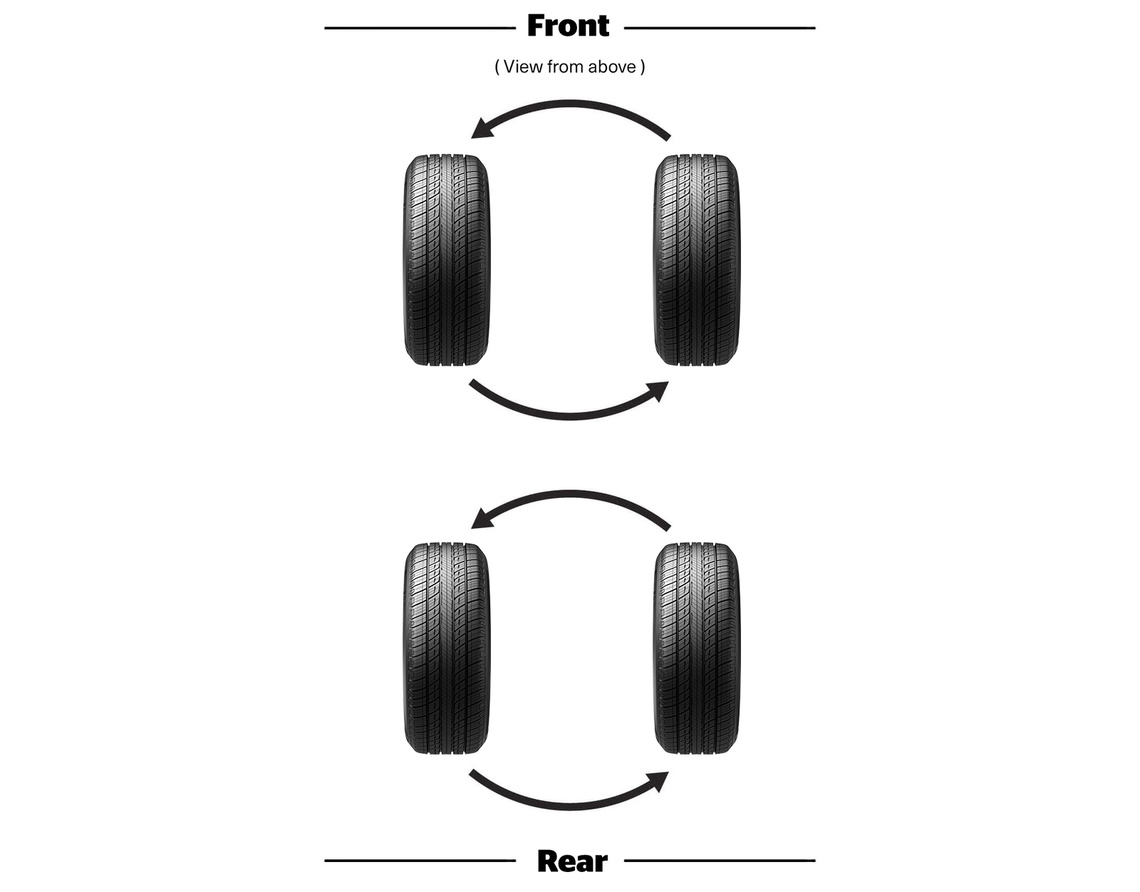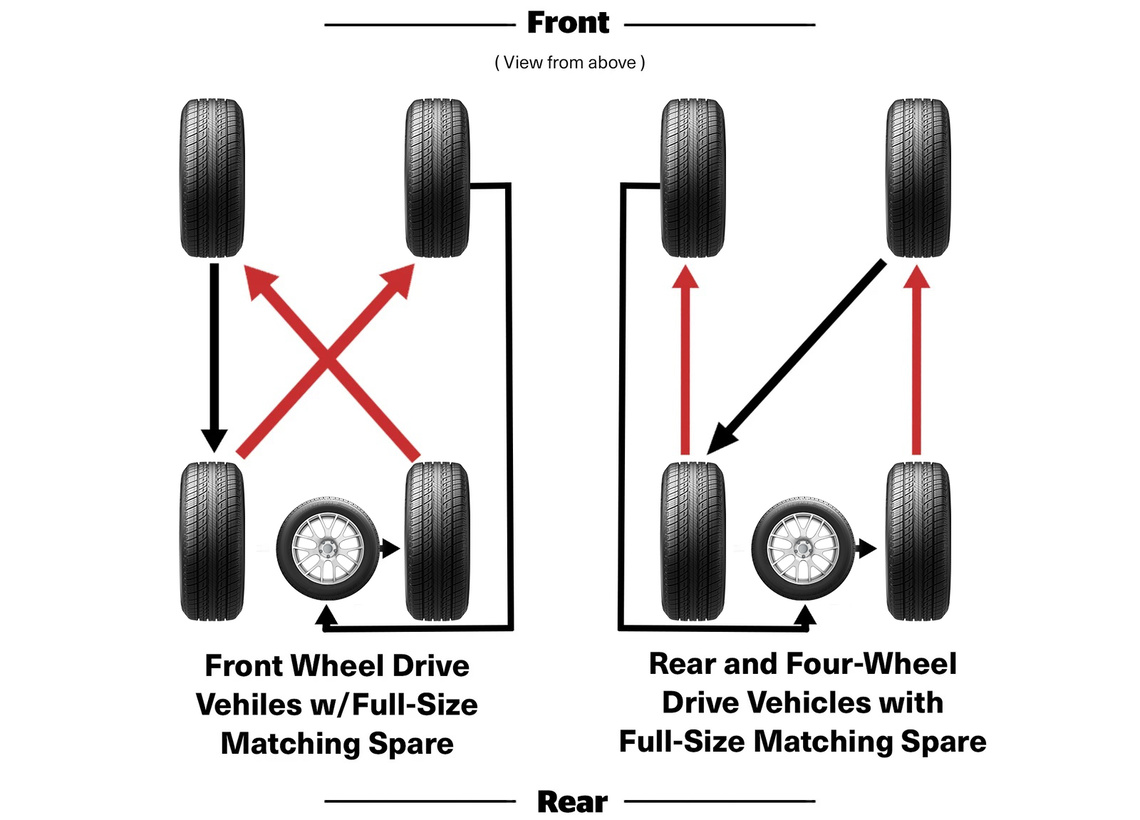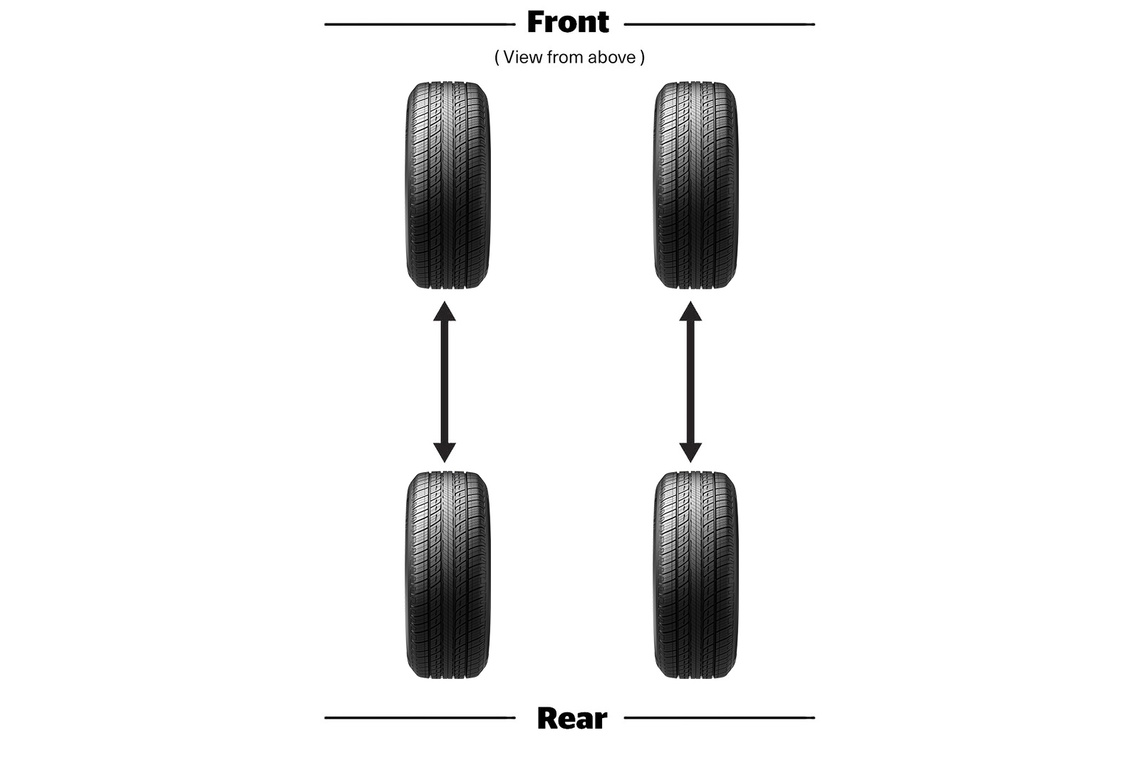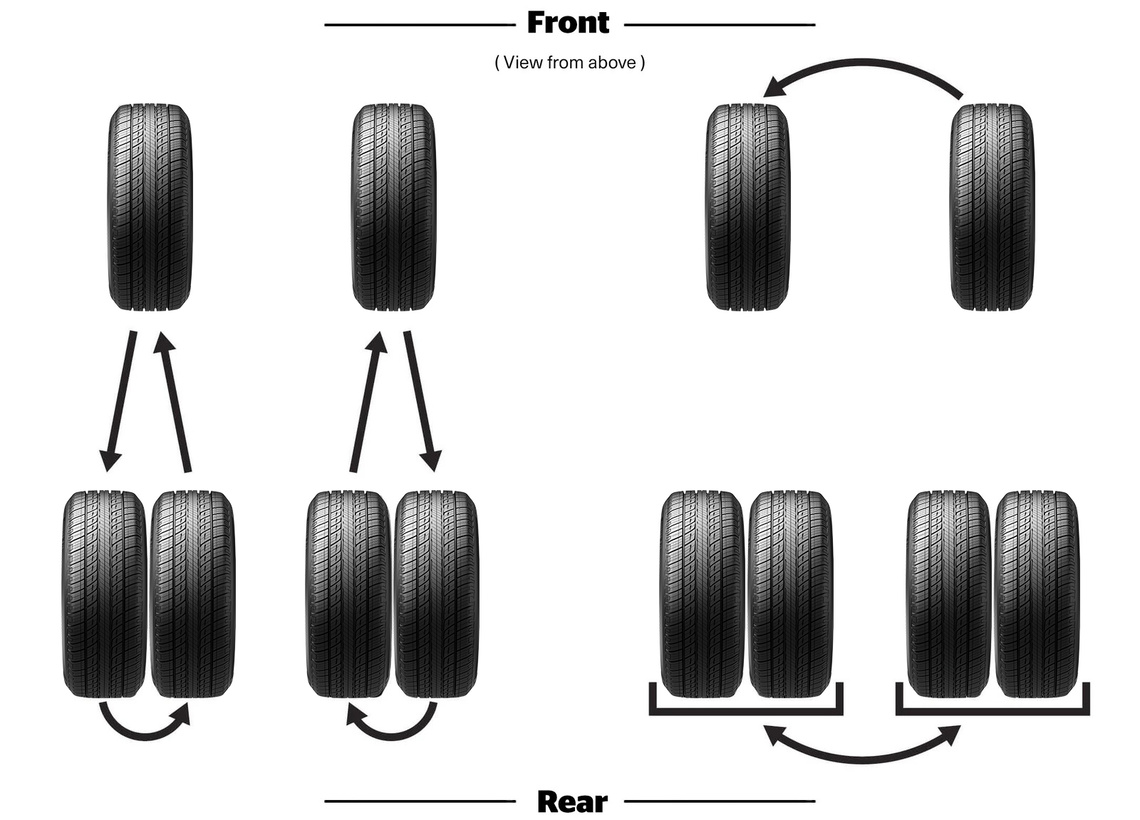TIRE CARE AND MAINTENANCE
TIRE CARE AND MAINTENANCE
TIRE PRESSURE AND INFLATION
Incorrect tire pressure is nothing to play around with. Worst case, it can result in a sudden loss of air pressure, and at the very least, you’ll experience faster wear and reduced gas mileage.
Simply looking at your tires is not an accurate test of pressure. Tires are known to lose about one PSI (pounds per square inch) over the course of a month, so it’s a good idea to check your tire pressure monthly. Be sure to check it before going on a long trip, too.
To get an accurate tire pressure reading, you should check your tires a few hours after the vehicle has been at rest. This is because the air inside your tires heats up and expands as you drive, and it takes time to cool back down.
Keep a pressure gauge in your car and find out what the proper PSI of your tire is. That information is usually on the sticker on your driver’s side door or in your owner’s manual.
How to Check Tire Pressure
- Remove cap from the air valve.
- Press the pressure gauge against the uncovered valve and hold it firmly.
- The hissing sound means air is escaping from the tire. This is how you let air out if you accidentally overinflate it.
TIRE ROTATION, BALANCE AND ALIGNMENT
Rotating your tires every six months (or every 6,000-8,000 miles) ensures they wear evenly, which results in longer tire life and better performance. Below are the most common rotation patterns for passenger and 4-wheel vehicles and all-wheel drive light trucks.
Use this method only with the purchase of two tires or different tire sizes between front and rear axles.
two tire rotation pattern

6 tire rotation pattern

alternative rotation patterns

Use this method when dismounting tire from the wheel is not practical.
alternate rotation for directional tire

dual wheel rotation patterns

ADDITIONAL TIRE CARE TIPS
To check tread wear, you can use a tread gauge, treadwear indicators, or try the penny test.
The penny test is completed by simply taking a penny and placing it between the grooves of the tread. Identify an area where the tread seams lowest and put the penny there with Abe’s head upside down. If the tread covers any part of Abe’s head, your tires have a safe and legal tread depth. If the tread doesn’t reach Abe’s head, that means your tread depth is less than 2/32 of an inch and it’s time to get some new tires.
Cleaning your tires with tire cleaner or soap and water will help you see any visible perforations, cuts or deformations. Check for troublemakers like rocks and nails as well.
Pay attention to how your tires feel when you drive. A rough ride or vibrations could both indicate tire damage. If this happens, practice caution and slow down until you can check the tire. If there is damage replace the tire with you spare until you can have a professional inspect it.
There is a difference between a sidewall indentation and a sidewall bulge or bubble. An indentation is natural for most radial tires and does not affect performance. A bulge, however, indicates damaged cords due to severe impact. A visible break in the inner liner may also accompany a bulge, which is caused by air infiltrating the plies. A bulge is irreparable, and you should immediately replace the tire with your spare.
The following issues are indicators that your vehicle has poor alignment:
- Uneven wear on front or rear tires
- Excessive heat generation
- A pull to one side
If your vehicle is equipped with rear suspensions, you may need a front-end alignment or a four-wheel alignment to solve the alignment problem.
Often called a “soft tire,” an underinflated tire:
- Wears down the outside edges/shoulders of the tire and reduces tread life
- Generates excessive heat, which reduces tire durability and can lead to tire failure
- Makes your vehicle work harder by reducing fuel economy through increased rolling resistance
If your tire is overinflated, take air out as soon as possible to avoid wearing out the center of the tread faster than the outside edges.
If you notice your vehicle shimmying or vibrating as you drive, the tires may be out of balance. You should have your tires rebalanced by a professional as soon as possible because the constant vibration will cause uneven wear.
Flat spotting happens when your car is parked for too long. Sometimes the tire can flatten out slightly where it is touching the pavement or ground. This is not a permanent problem, but it can be annoying, causing your vehicle to vibrate when you first start driving again. The flat spot will eventually go away on its own as the tire heats up.
How to Avoid Flat Spotting:
- Keep your tires properly inflated
- Drive your vehicle often
- If you’re leaving your vehicle parked for a long time, avoid heat and chemical exposure
- Avoid severe braking (This causes a different type of flat spotting that can take thousands of miles to resolve. Drivers with anti-lock brakes rarely experience this problem.)
- You could consider using a tire cradle, but the cradle must match the curvature of your tire exactly.
